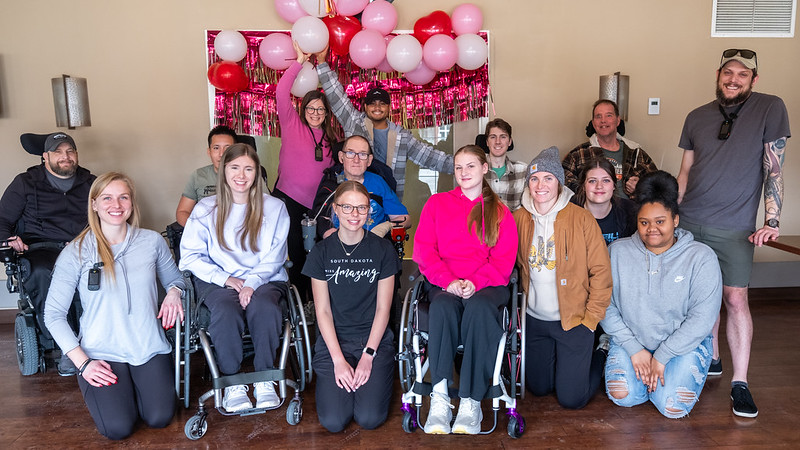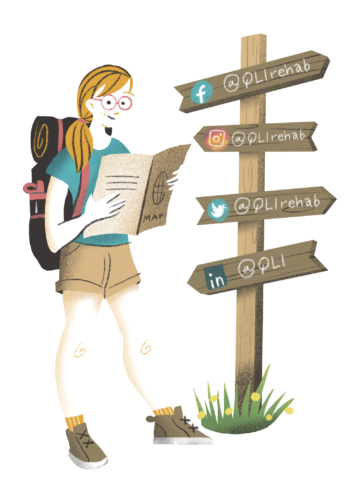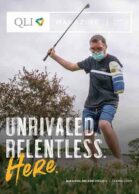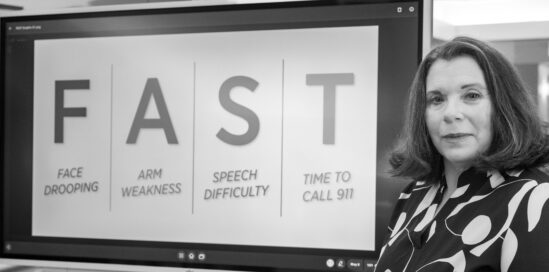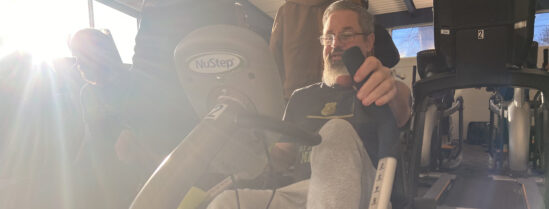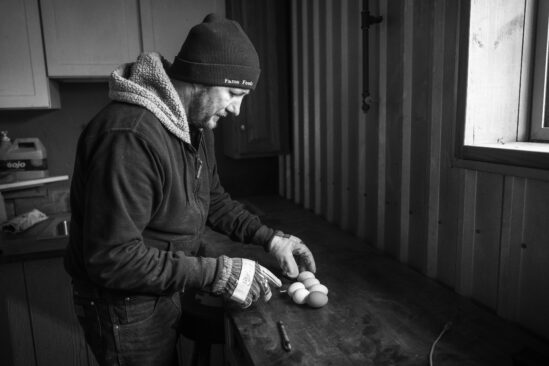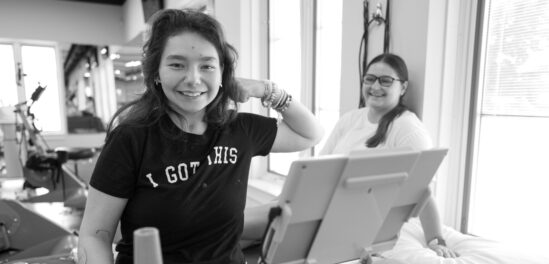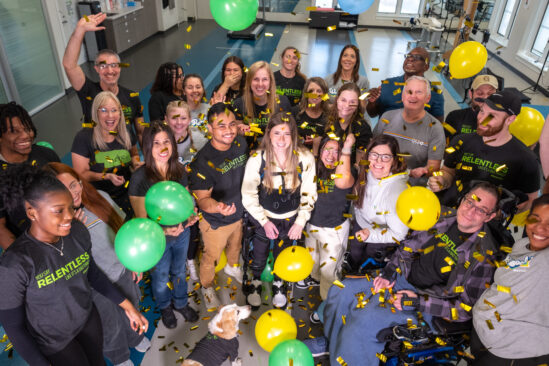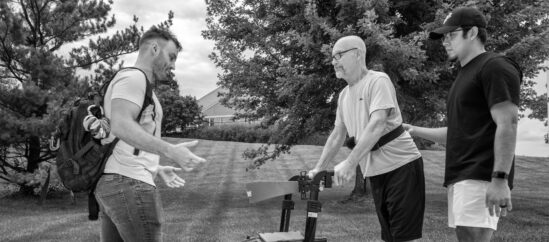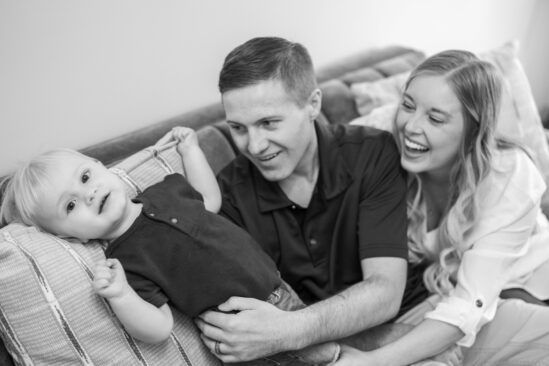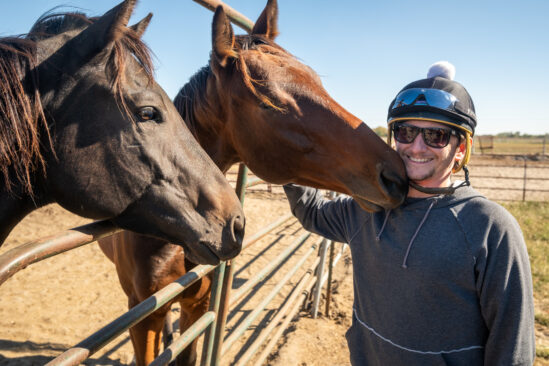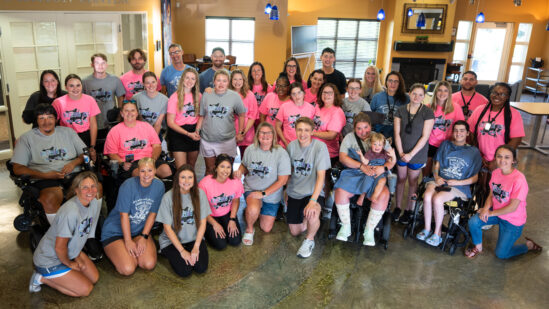“I think we missed our turn back there,” but the car, moving quickly along at highway speeds, doesn’t slow down.
“Should we turn around?”
“No–I think we can get there through this road up here.” The car turns, transitioning onto a windy road through the trees. The houses become far and few between up in the wooded areas, the pavement of the highway, and outer roads transitioning to gravel. The car bumps and moves along, but the hands that guide them never waver. A little barn is passed.
“Stop here for a second,” says occupational therapist Madie Otte. “Let’s make a three-point turn.”
Ashlin Carlson, in the driver’s seat, punches a button on the control device at her right, moving the car from drive to reverse. She then rocks the control backward, providing a little bit of speed. It gives way at first with a little lurch but stabilizes. Then a transition back into drive, the Camry now headed in the opposite direction. There’s a hint of a smile—she’s passed the final driving test.
“Let’s find our way back to campus,” says Madie.
__
Arriving on QLI’s campus for the first time, the way of getting to know Ashlin was first through her family, and then, with hope and care, discovering her desires through her directly. It was the kind of situation Life Path Specialist Janelle Thomas had seen before, and she knew she’d be lying if she said she wasn’t a little heartbroken. “She kept her head down,” remembers Janelle, “her family did the talking. It was tough—here she was at seventeen years old,” knowing that the months ahead would be a trial. There was undoubtedly some reticence and fear at the start, as there can be for many QLI clients when they 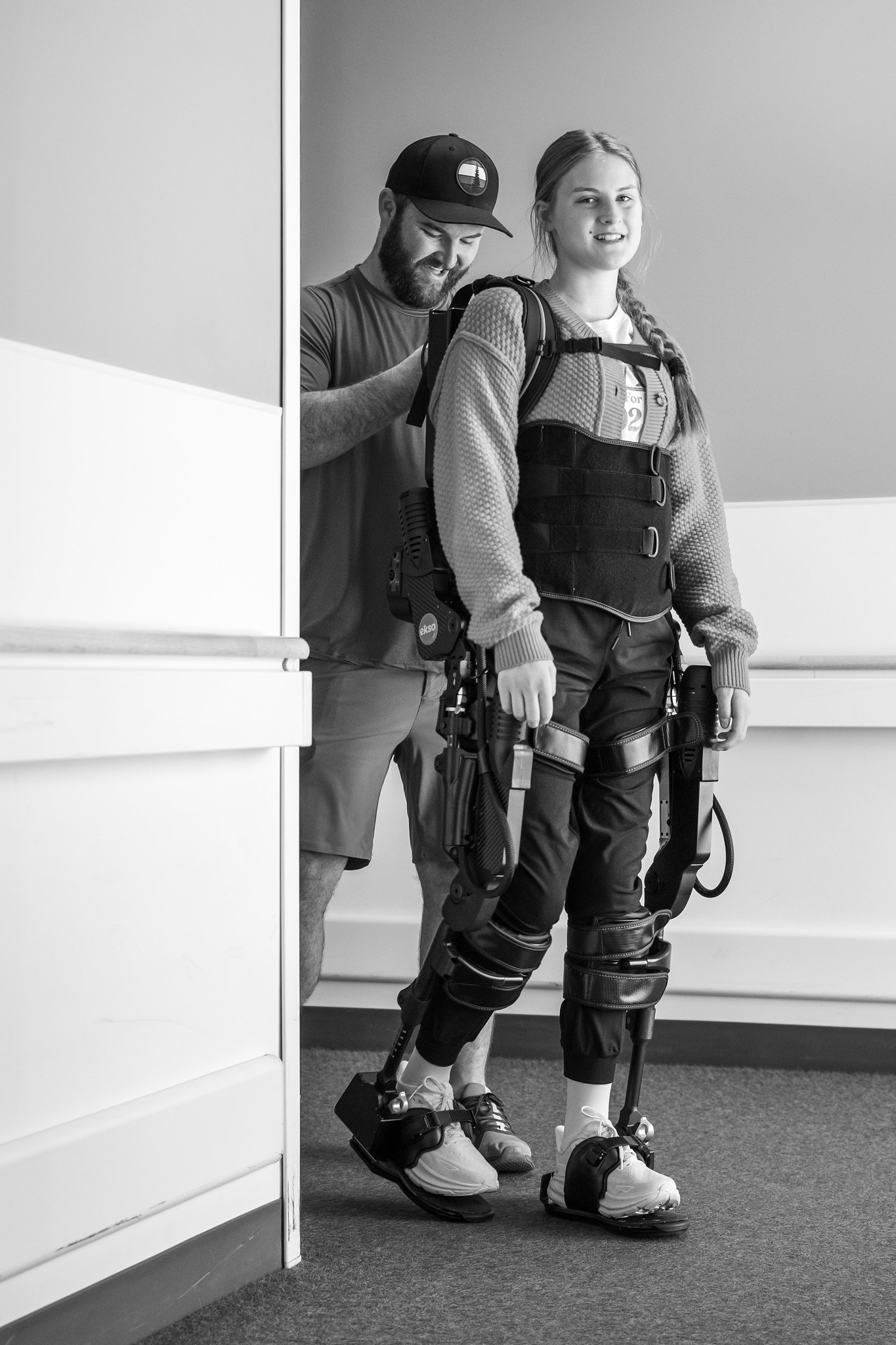 first arrive. But Ashlin’s younger age than most did not mean she would be incapable of meeting her challenges.
first arrive. But Ashlin’s younger age than most did not mean she would be incapable of meeting her challenges.
“I’ve always tended to do my own thing,” says Ashlin. With confidence and a natural presence, Ashlin joined her high school softball team, in Sioux Falls, South Dakota, loving not just the competitive nature of it, but the opportunity for growth that intensive sports can provide. Tournament competition was something that allowed for all those cylinders to fire. But while on the road with her family to a competition, they got into an accident, the others made it out with minor injuries, but Ashlin sustained a spinal cord injury.
As Ashlin’s journey progressed towards QLI, the word at the front of her mind was, simply, normal. Of course, what is “normal” is in the eye of the beholder. For Ashlin, this was: “I want a normal life—as normal as it can be—and not be held back.” Normality after such an injury might seem like a foggy destination across an impassable gulf. But seems like is not reality.
Ashlin greatly values the time spent with family and friends, and having the freedom to go anywhere at any time.
Janelle recalls a brief moment of panic for Ashlin, but one that was quickly assuaged by herself and her father—a reminder to simply breathe. “It was a process,” notes Janelle, “but it was not a matter of pushing what we wanted for Ashlin, it was simply giving her time to grow in her program.” As comfortability and trust are gained, a client can flourish in determining what they want to accomplish. The team listened to her words, her dreams, and then collaborated to create an actionable plan. Some clients may be comfortable to move headlong into their programs, but it just as likely takes time for some.
It starts with getting in the car again—going out to a store, navigating through it in a wheelchair, and the transfers in and out of the car. “Driving is the great equalizer,” says Madie, “and it opens the doors to so many things.” Ashlin began to meet with Madie regularly. It isn’t a one-size-fits-all type of program, with Madie acting as a driver’s education instructor, harping on the fine details, needing Ashlin to pass benchmark ‘A’ through ‘Z’ in the exact order. The two identified the clear goals through which they would begin. Ashlin’s driving habits from before covered just about any and every kind of road condition and speed. The crucial factors to come into play are the same feelings we all experienced our first time behind the wheel. There nervousness within because we know this to be a major responsibility we are taking on. But there is also an eager confidence.
The first step was getting acquainted with adapted driving controls. One, a spinner knob on the steering wheel that worked well for the limited hand function Ashlin had. Another was a push rock control (pushing for brake and rocking back for gas) with an attachment for secondary control buttons. It was a matter of trial and error for the two, spanning from the size of the push rock control, which side of the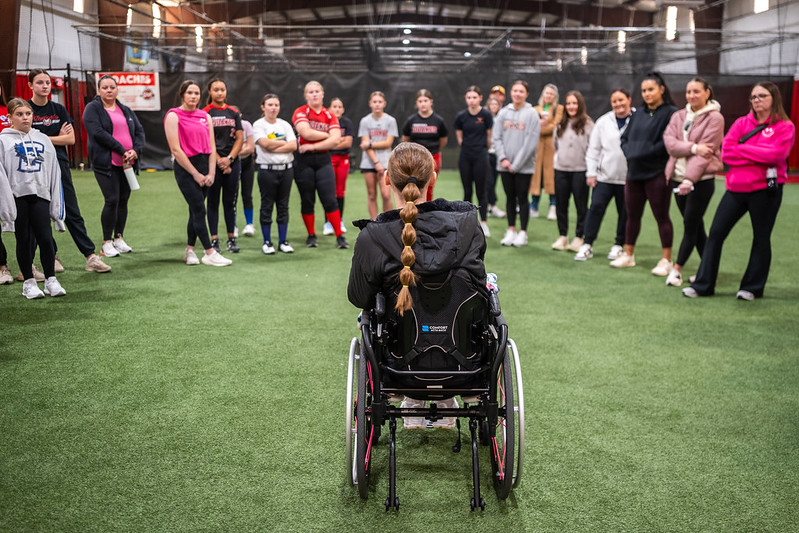 steering column to place it, or which slot along the steering wheel to fit the spinner knob. As Ashlin’s hand function and grip strength increased, the knob could be placed higher on the wheel, allowing for more fluid and smoother turns. “We started by taking laps around QLI’s Rehabilitation Campus,” says Madie, “before progressing slowly to parking lots off campus, then to neighborhood streets.”
steering column to place it, or which slot along the steering wheel to fit the spinner knob. As Ashlin’s hand function and grip strength increased, the knob could be placed higher on the wheel, allowing for more fluid and smoother turns. “We started by taking laps around QLI’s Rehabilitation Campus,” says Madie, “before progressing slowly to parking lots off campus, then to neighborhood streets.”
“It was strange to get behind the wheel,” says Ashlin, “but I feel like the skills started to come back naturally—I never even had the instinct to try and use my feet. Getting up to speed was a little more difficult, and nerve-wracking—I wanted to go very slow. But as I kept doing it, I got much more comfortable.” Having grown in confidence with the rudimentary skill of driving, Ashlin and Madie were ready to tackle routes and road conditions that would align with the kinds Ashlin would be traveling on back home in Sioux Falls—winding, hilly streets, gravel roads, and interstates and highways.
“How are you feeling?” Madie asked Ashlin about the prospect of getting out onto the interstate. “Ashlin was a little apprehensive at first, but we talked through it extensively beforehand, and built a strategy—I would make sure to identify things like oncoming cars, and speed changes. Our trust was able to deepen, and by the time she got onto the interstate, I could see the change in her face, as if to say ‘This isn’t too bad.’” By keeping a consistent schedule with driving times to feel out all the kinds of roads she would be getting back to, the sessions grew to a place where an unknowing observer wouldn’t assume that Ashlin was recovering from an injury—they would see the vibrant truth—that she’s back doing what she did before, and having a good time. A renewed sense of normal.
“She is picking up on everything, looking at how other clients go about certain tasks and asking what that might look like for her,” says Janelle. Ashlin is, quite simply, going to get to the place she wants to—through the re-discovered confidence and trust, the knowledge that distant goals are very much so reachable through a deliberate and committed plan.
All of this grew crystal clear when, over a weekend, Ashlin’s sisters and friends came to town to visit her. Along with Janelle, they went off to the outlet malls, spending hours there. When the group returned and got settled, Ashlin reflected. “She’s not the sentimental type.” Janelle smiles. “She said ‘thank you for making me feel normal,’ and ‘see you Monday.’” Grateful, and ready to push through and find that next milestone.
